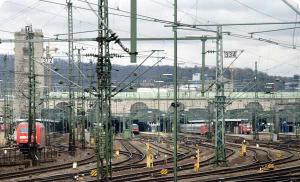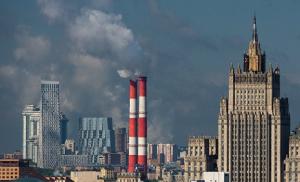England. A difficult path to greatness and prosperity

Chartism - a movement for electoral reform The activities of parliament strengthened workers' confidence in the possibility of improving their situation peacefully - through reforms in 1839 London Congress of Chartists - National Convention Arrests of Chartist leaders followed 1848 London Wave of rallies Parliament realized the inevitability of reforms

Victorian era ()



From Chartism to Devotion. The period of economic prosperity improved the position of skilled workers: shorter working hours, higher wages, access to education - increased freedom of speech, press, and manifestations. 60s of the XIX century - the permission of public meetings in certain places (London - Hyde Park) - the creation of the British Congress of Trade Unions. Trade unions are trade unions in England and the countries of the British Empire, usually uniting workers by profession and defending their rights.

Foreign policy. The goal is to maintain balance in Europe. Colonial character. 1) Limiting the power of Russia. 2) Support for Italy in the Struggle with France. 3) - the war in Afghanistan. 4) Establishing control over the Suez Canal. 5) "Opium Wars" with China - First "Opium War" - Second "Opium War" Colonial conquests: South Burma, Malaya, West Africa, New Zealand, Australia. Henry Palmerston, English diplomat

LESSON № 3. England. A difficult path to greatness and prosperity
Lesson objectives:
Educational: students will learn that at the beginning of the Victorian era in England, the process of the formation of a rule of law and civil society continued, which by mid. XIX century. A parliamentary regime was consolidated in the country. Get acquainted with the reasons, course and results of the Chartist movement.
Developing: develop skills in working with documents, the ability to evaluate events from the standpoint of representatives of different segments of the population
Educational: the greatness of the country is created by the creative labor of the people, the implementation of social reforms allows you to avoid bloodshed.
Lesson type: combined
Teaching methods: reproductive and b / n
Forms of work: frontal survey, teacher's story, work with a textbook and documents, messages
Organizing time.
Updating knowledge on the topic: "The defeat of Napoleon's empire"
Tell us about Napoleon's domestic politics
Which of his reforms did Napoleon consider the best?
Describe Napoleon's aggressive policy
What are the main reasons for the weakening of Napoleon's empire?
Explain the collapse of Napoleon's empire
Congress of Vienna, its goals and results.
Learning new material.
1) Reform Bill
You already know that by the beginning of the 19th century. England was the country where the modernization process developed most successfully. Its path to prosperity was very difficult: in England there were acute social contradictions and gradually gained experience in resolving them on the basis of social reforms.
ReadWith. 97-98 ... Highlight the reasons for the struggle for reforms, the position of the British.
Already at the end of the 18th century. England became a constitutional monarchy, the real power belonged to parliament, but the electoral system was outdated long ago. Each city or region could send a certain number of votes to the Chamber of Deputies. By the beginning of the 19th century. some towns became depopulated and received the name "rotten townships", but they owned half of the seats in parliament, the landlord, the owner of the land, controlled the votes of voters in these towns. New industrial centers, such as Birmingham, were generally deprived of representation. Not only the workers, but also many representatives of the industrial bourgeoisie did not have the right to vote. Of the nearly 20 million population of England (in 1815), only 160 thousand people had the right to vote.
A movement for universal suffrage grew in the country, accompanied by demonstrations and mass rallies. In August 1819, during a rally in Manchester, troops dispersed the participants and 11 people died. The rally took place on St. Peter's Field, and a regiment that took part in the Battle of Waterloo participated in its dispersal. The people called this tragedy the massacre at Peterloo. In order to prevent a revolutionary explosion, the authorities in the following years made a number of concessions. In 1825, they lifted the ban on the creation of labor unions, and trade unions began to be created in the country - trade unions.
The movement for electoral reform acquired a special scope in the 1920s. The industrial bourgeoisie acted in alliance with the workers, the Whig party, which came to power in 1830 (after a 40-year hiatus), took the lead in the struggle, and held on to liberal positions. The Whigs understood that refusal to reform could lead to a revolutionary explosion.
In 1832 parliament was forced to carry out an electoral reform. Most of the "rotten townships" were destroyed, the vacated seats in parliament were transferred to industrial cities and densely populated areas, as well as Scotland and Ireland. The number of voters doubled, now 1/6 of the adult male population could participate in the elections. For voters, the law retained a high property qualification, and the lower strata of the population could not get into parliament. There was no secret ballot either, which meant that landlords could still influence the outcome of the election.
Instead of the improvements expected from the reform, the poor received workhouses from parliament. In 1834, the Poor Law was passed, which allowed only the old and the sick to provide charitable assistance at home. All others in need were sent to workhouses. Living conditions in them were extremely difficult: meager food, exhausting labor (forced to crush stones, unwind ropes, etc.). Wives were separated from their husbands, children from their parents. It was not allowed to leave the workhouses. It all looked like a prison sentence. Many poor people preferred hunger to life in workhouses. The idea that their representatives in parliament would be able to change something did not leave the poor.
2) Chartism
The origins of the Chartist movement
Government anti-labor policy
Disappointment of the proletariat in the electoral system
Impact of the economic crisis
Chartism. "A charter, a charter and nothing but a charter!"Chartism- electoral reform movement(from the English. charter - diploma, charter). In 1836, on the initiative William Lovett(1800-1877) the London Workers' Association was founded, and he himself became its secretary.
William Lovett was born in a small fishing village, left for London in his youth, and became a cabinetmaker. All his free time he was engaged in self-education, attended lectures at the London Institute of Mechanics, became a follower of Robert Owen.
"Political power is our means, social welfare is our goal," the Chartists declared. "If we achieve universal suffrage," they reasoned, "power will be in our hands."
Most of the Chartists recognized only a peaceful way to achieve the goal - an appeal to parliament with a nationwide petition. But there were also those who demanded "outside pressure" on parliament (strikes and even uprisings). Among them, the Irish-born lawyer stood out Fergus O "Connor(1796-1855).
In 1837 he founded the newspaper Severnaya Zvezda, which promoted the slogans of the Chartist movement. O "Connor was a natural tribune of the people. Tall, imposing appearance, had a thunderous voice, he was one of the best orators in England. Courage and fearlessness won him authority among the workers, he was called the" lion of freedom. "O" Connor believed that a good salary relied for good work, treated property with respect, was a supporter of the resettlement of workers on land and even created the Land Society for this purpose. Even political opponents recognized his honesty and incorruptibility.
1836 - London Workers' (Chartists) Association established
1838 - Chartist program - "People's Charter"
Universal suffrage for men 21 years of age and older
Equal constituencies
Annual re-election of members of parliament
Payment for the activities of members of parliament
Cancellation of the property qualification in the course of parliamentary elections
In February 1839 In London, a convention of the Chartists met - the National Convention. Petition signatures were collected across the country, and in July a national charter petition was brought to parliament but rejected by the House of Commons. In response, strikes broke out in a number of cities, followed by arrests of Chartist leaders.
In 1842, the House rejected the petition for the second time.
In the spring of 1848, a wave of rallies broke out again in London and other industrial cities, where, along with the demand for the adoption of the charter, there were calls for the destruction of the House of Peers and the proclamation of a republic. The Chartist convention met in April.
The next petition was signed, according to various sources, from 5 to 6 million people. And this petition did not escape the same fate. The House of Commons rejected it. After that, the movement began to decline.
1839, 1842, 1848 - Chartists put forward PETITIONS (demands) to Parliament. They were all rejected.
Movement RESULTS: (With. one hundred - write it yourself)
In parliament, the Tories and Whigs could not help but pay attention to these events, they understood the inevitability of reforms. As a result, the working day was reduced to 10 hours, child labor was limited, and the wages of skilled workers were increased. Subsequently, the government abolished the property qualification for parliament members, introduced a secret ballot, the entire adult male population - each head of the family - received the right to vote. The activities of the parliament strengthened the confidence of the working people in the possibility of improving their situation peacefully - through the implementation of reforms.
Working day - 10 hours
Child labor is limited
Increased wages for skilled workers
Property qualification for parliament deputies canceled
All men got the suffrage
The first working party appeared
3) Economic development of England
England's Time of Greatness and Prosperity - Victorian Era , the beginning of which dates back to the 40s. XIX century. During these years, the country becomes the "workshop of the world", creates its own colonial empire, its authority in the international arena is indisputable.
The Victorian era is the 64 years of the reign of Queen Victoria (1837-1901). During this time, the cult of the queen developed in the country, in which the British began to see the living embodiment of their greatness. Indeed, during the Victorian era, the monarchy was able to maintain the foundations of order and the well-being of a large part of the population.
In May 1851, the World Industrial Exhibition, as the British called it, opened in London's Crystal Palace, which brought brilliant success to the country. Thousands of firms from dozens of countries brought samples of their products. But most of all the audience gathered at the stands of England. There were models of bridges and port facilities, models of ships and steam locomotives, cotton spinning machines, operating telegraph machines.
The exhibition opened the beginning of the "golden age" in the development of industrial England. Having completed the industrial revolution, the country had no serious rivals either in industry or in trade. She became the "workshop of the world", "world cabman", "world banker".
Railways were an integral part of the English landscape. The use of steel rails made it possible to run heavy trains. Half of the railways belonged to the railroad "king" James Hudson.
Huge steamers were built in English shipyards. In 1852, the Agamemnon, the world's first steam vessel with a screw engine, was launched. In 1865 the country had 5 thousand steam ships, and their tonnage exceeded that of the sailing fleet. British ships were used by foreign countries to transport goods to the most remote parts of the world. England's monopoly position on the world market, the use of the latest technology gave her the opportunity to produce cheaper goods, with which no country could compete.
The number of banks, which mainly gave loans to other countries, invested in the construction of factories and railways abroad, is growing rapidly. The pound sterling has become the main means of settlements between the countries of the world, and the London Stock Exchange has become a barometer and regulator of the world market.
The British bourgeoisie was the richest and most powerful in the world, it was the first to export abroad not only goods, but also huge amounts of money.
In the countryside, the land still belonged to landlords, who rented it out to farmers who ran their economy in a capitalist way, hiring farm laborers. Despite the increase in acreage and the growth of agricultural production, English agriculture could not meet the growing demand of industry for raw materials, and the urban population for food. A continuous flow of raw materials and food went to England from the colonies and from other countries
Completed parliamentary regime. Historians believe that it was at the beginning of the Victorian era that a "complete parliamentary regime" was formed in England, based on the responsibility of the cabinet of ministers to parliament. Already from the 40s. the House of Commons not only controls the government, but can also remove it, passing a vote of no confidence. From 1837 to 1866, out of nine cabinets, eight retired by decision of the House of Commons.
Parliament was increasingly inclined to adopt decisions that contributed to the strengthening of civil peace. The era of Queen Victoria is also called the "era of the Victorian compromise."
Since 1832 freedoms of speech, press, and manifestations have expanded significantly. When in the 60s. the protests of the people who demanded the continuation of reforms intensified, the queen and her government allocated special places in London where those who wished could exercise their right to public rallies.
From Chartism to Devotion. The period of economic prosperity improved the position of most factory workers (especially skilled workers), who achieved shorter working hours and higher wages.
In England in the 50-60s. increased influence of liberal views on the development of society. Some politicians and writers urged to be more attentive to the needs of the "lower class". Most of the entrepreneurs realized the need for partial concessions, because the memories of the "troubling forties" were vivid in their memory. The huge profits received in these years (including from the robbery of the colonies) made it possible to spend part of them on raising wages and improving the life of the workers.
Most of the new generation of English workers were literate, ate better and better dressed, some even saved for a rainy day.
During this period, trade unions are actively created. The first trade unions united 1.5 million highly skilled workers. Low-paid workers were fenced off from trade unions by high membership fees. Members of the trade unions were protected by insurance premiums against unemployment, illness, accidents.
In 1860, a Professional Council was formed from the delegates of the London trade unions to protect the interests of the workers. The leaders of the council enjoyed great influence among the workers - they were called "the workers' kings of London." V 1868 was created existing and today British Trade Union Congress.
4) Foreign policy of England (question 6 - in writing) (Tell us about England's foreign policy and give your opinion on its nature.)
"We have neither eternal allies, nor permanent friends, but our interests are eternal and constant, and it is our duty to protect them" - this is how its leader, the English diplomat and liberal, LordPalmerston(1784-1865).
... The goal of foreign policy: maintaining a balance in Europe, opposing the rise of either France or Russia, which allowed Britain to "rule the seas", to maintain its commercial primacy and colonial rule.
1853-1856 - Crimean War. England fought against Russia for Turkey
Seeing France as its rival for leadership in Europe, England supported Italy in the fight against Emperor Napoleon.III.
To the middleXIXEngland is a huge colonial empire, the most important part of which was India with a population of 300 million people.
Anshgliya fought against China, Iran, Afghanistan, captured South Burma, Malaya, West Africa
In the 1850-1860s. the colonization of Australia and New Zealand, the development of Canada continued. Here the colonialists mercilessly exterminated the indigenous population, resettling them to unsuitable lands, where few survived. gold mining.
The colonies served as a source of raw materials and food for England, those for whom there was no work at home went there, and this made the political situation in England calmer.
The foreign policy of England was colonial in nature and was aimed at raising its status and prestige not only in Europe, but throughout the world.
At the beginning of the XIX century. the process of modernization in England took place in an atmosphere of acute social conflicts, but the ruling circles increasingly turned to political and social reforms as a method of resolving contradictions.
England became the "workshop of the world" and achieved dominance in the world market. In the middle of the XIX century. the country was the richest among the European states; the sun never set in the British Empire.
Homework. § 13, c. 6 - in writing - finish.
Outline of a history lesson for grade 8 on the topic:
"Great Britain: The Difficult Path to Greatness and Prosperity"
Lesson objectives:
Educational:
students will learn that at the beginning of the Victorian era in England, the process of formation of the rule of law and civil society continued, which by mid. XIX century. A parliamentary regime was consolidated in the country. Get acquainted with the reasons, course and results of the Chartist movement.
Developing:
develop skills in working with documents, the ability to assess events from the perspective of representatives of different segments of the population
Educational:
the greatness of the country is created by the creative labor of the people, the implementation of social reforms helps to avoid bloodshed.
Lesson type: combined.
Forms of work: frontal survey, teacher's story, work with a textbook and documents.
During the classes:
Organizing time:
The teacher greets the students. Prepares them for the lesson by announcing its goals.
Updating knowledge on the previous topic “The Defeat of Napoleon's Empire. Congress of Vienna ".
What was the internal and external position of Napoleon's empireI?
What are the reasons for the weakening of the empire after 1809?
What are the reasons for Napoleon's entryIin the war with Russia? Give an assessment of the position of the emperor.
Why Napoleon Idid not raise the people to fight the opponents of France after the Battle of Waterloo? Ponder if there could have been a different turn of events than the one that happened.
What were the territorial changes as decided by the Vienna Congress?
The teacher summarizes the students' responses:
As a result of the decisions of the Vienna Congress, Europe was for the first time covered by a system of treaties that lasted until the middleXIXv. The great powers believed they had established an international order based on the principle of a balance of power. After the Congress of Vienna, a period of peace began in Europe.
Learning new material.
Plan for learning new material:
Reform bill.
Chartism.
The beginning of the Victorian era.
Foreign policy.
Reform bill.
The teacher addresses the class:
You already know that by the beginning of the 19th century. England was the country where the modernization process developed most successfully. Its path to prosperity was very difficult: in England there were acute social contradictions and gradually gained experience in resolving them on the basis of social reforms.
Already at the endXviiicentury Great Britain became a constitutional monarchy, real power belonged to parliament, but the electoral system is outdated long ago. Cities and rural counties could send a certain number of votes to the House. To the beginningXIXcenturies, some towns were depopulated and were called "rotten towns", but they owned half of the seats in parliament. Votes of voters in "rotten townships" were in charge of the landlord, the owner of the land. New industrial centers, such as Birmingham, were generally deprived of representation. Not only the workers, but also many representatives of the industrial bourgeoisie did not have the right to vote.
A movement for universal suffrage grew in the country, accompanied by demonstrations and mass rallies.
In order to prevent a revolutionary explosion, the authorities made a number of concessions in the following years:
Treadunions - trade unions.
1832 year - electoral reform:
A) most of the "rotten places" were destroyed;
B) the vacated seats in parliament were transferred to industrial cities and densely populated areas, as well as Scotland and Ireland;
V) a high property qualification remained;
G) the lower strata of the population could not get into parliament;
D) there was no secret ballot.
Thus, instead of the improvements expected from the reform, the poor received nothing but workhouses (they read about workhouses on their own in a textbook at home).
Chartism.
Chartism - electoral reform movement (from the English.charter - diploma, charter). In 1836, on the initiativeWilliam Lovett (1800-1877) the London Workers' Association was founded, and he himself became its secretary.
The reasons for the emergence of the Chartist movement:
Government anti-labor policy;
Disappointment of the proletariat in the electoral system;
Impact of the economic crisis.
Most of the Chartists recognized only a peaceful way to achieve the goal - an appeal to parliament with a nationwide petition.
1839, 1842, 1848 - Chartists put forward PETITIONS (demands) to Parliament. They were all rejected.
Working with a Historical Source (p. 120) - Reading and then analyzing the Chartist Petition adopted by the National Chartist Association in May 1842 (extracts).
Movement results:
Working day - 10 hours.
Child labor is limited.
The wages of skilled workers have been increased.
The property qualification for MPs has been canceled.
All men received the right to vote.
The first workers' party appeared.
The beginning of the Victorian era.
The teacher addresses the class:
Read the paragraph “The Beginning of the Victorian Era. England is the "workshop of the world" and complete the task on page 120 # 4.
"Completed parliamentary regime."
Teacher's story:
At the beginning of the Victorian era, a "complete parliamentary regime" took shape in England, the main feature of which is the full recognition of the principle of the responsibility of the cabinet of ministers to parliament. From 1837 to 1866, 8 out of 9 cabinets of ministers resigned by decision of the House of Commons.
From Chartism to Devotion.
Teacher's story:
The period of economic prosperity improved the position of skilled workers: shorter working hours, higher wages, access to education.
1832 - Expansion of freedom of speech, press, demonstrations.
60sXIX century- permission for public meetings in certain places (London - Hyde Park).
1868 - Creation of the British Congress of Trade Unions.
Foreign policy.
Students carry out the analysis of foreign policy together with the teacher, through commented reading and teacher's questions to the read.
Lesson summary:
Anchoring.
Questions on page 120 of the textbook.
Homework:
Paragraph 13, questions to the paragraph, entries in the notebook.
Lesson grades.
To use the preview of presentations, create yourself a Google account (account) and log into it: https://accounts.google.com
Slide captions:
Key dates: 1804-1814 - 1807 - 1812 - 1815 -
Basic concepts Consular period Continental blockade Congress of Vienna Holy Union
MBOU secondary school in Bagrationovsk Somova S.G. England: a difficult path to greatness and prosperity New history 1800 - 1913 Grade 8
Lesson plan 1. Bill of Reform. 2. Chartism 3. The beginning of the Victorian era. England - "workshop of the world" 4. Foreign policy
King (queen) Parliament House of Lords (lifetime) House of Commons (elected) Conservatives (Tories) Liberals (Whigs) England - constitutional monarchy 160 thousand people have the right to elect members of parliament
Reform Bill - pp. 97-98 Reasons for Parliamentary Reform Forms of Speeches Government Reactions
Reform Bill Causes of Parliamentary Reform Forms of Speeches Government Response Obsolescence of the Electoral System: "Rotten Towns" New Industrial Centers Are Deprived of Representation Workers, the Bourgeoisie Have No Vote Demonstrations Mass rallies in 1825 - Cancellation of the ban on the creation of trade unions 1832 - electoral reform
Reform Bill - Outcomes 1834 - Poor Law, Workhouse Creation.
Chartism Chartism - Electoral Reform Movement 1836 - Creation of the London Workers' Association February 1839 Chartist convention convened in London National Convention First petition submitted to parliament 1848 - third petition submitted to parliament (5700 thousand signatures) 184 2 second Chartist petition mid 30s - late 1840s - Chartist movement decline rise
Victorian Era 1837 Victorian Era in England 1901 Queen Victoria 1851 World Industrial Exhibition in Economy England "workshop of the world" "world cab" "world banker" Politics - era of "Victorian compromise" 1860 Professional Council established to protect the interests of London workers 1868 British Trade Union Congress established
Foreign Policy Lord Palmerston "We have neither eternal allies, nor permanent friends, but our interests are eternal and constant, and it is our duty to protect them"
Foreign policy In the 19th century, England continues a series of wars and colonial conquests 1837 Victorian era in England 1901 England's duty is to spread constitutional freedoms in monarchist Europe.
Challenge Assignment: Why was the demand for parliamentary reform in 19th century England the main demand, and why did the reform movement not develop into a revolution?
Questions for consolidation 1. "Rotten places are": a) deserted towns and villages b) swamps and dense forests c) land of landlords
Questions to reinforce 2. Chartism is: a) workhouses b) streets in London c) electoral reform movement
Questions for consolidation 3. The foreign policy of England was aimed at: a) confrontation with Russia b) the seizure of new colonies c) the capture of France Indicate the number of the position that is superfluous in this list.
Reinforcement Questions 4. Replace the blank with the words you want. England in the era of its greatness and prosperity by the name of the then reigning queen is often called "_____________".
Answers A.V. In Victorian
Reflection Today I found out ... I was able to ... It was difficult ... I was surprised ... I wanted ...
Homework Paragraph 13 Question number 4 (p. 103) in writing in a notebook
 A country with a completed industrial revolution and huge colonial possessions, had no rivals in the world in the production and marketing of goods
A country with a completed industrial revolution and huge colonial possessions, had no rivals in the world in the production and marketing of goods
 Constitutional monarchy King (queen) Prime Minister Government "rotten townships" Parliament House of Lords House of Commons By inheritance Elections Limited right to choose
Constitutional monarchy King (queen) Prime Minister Government "rotten townships" Parliament House of Lords House of Commons By inheritance Elections Limited right to choose
 The real power belonged to the parliament, but the electoral system was outdated long ago: “rotten townships” appeared. New industrial centers were deprived of parliamentary representation. “Rotten townships are only workers, but many representatives of their industrial centers, who had the right to send the bourgeoisie, did not have the right to vote. deputies to the House of Commons Of the nearly 20 million population of England (in 1815), only 160 thousand people had the right to vote. "-
The real power belonged to the parliament, but the electoral system was outdated long ago: “rotten townships” appeared. New industrial centers were deprived of parliamentary representation. “Rotten townships are only workers, but many representatives of their industrial centers, who had the right to send the bourgeoisie, did not have the right to vote. deputies to the House of Commons Of the nearly 20 million population of England (in 1815), only 160 thousand people had the right to vote. "-
 The main political parties in England: Tories (liberals) - agricultural aristocracy, Anglican clergy. Whigs (conservatives) - new nobles, financial and industrial bourgeoisie
The main political parties in England: Tories (liberals) - agricultural aristocracy, Anglican clergy. Whigs (conservatives) - new nobles, financial and industrial bourgeoisie
 1830 - the coming to power of the Whig party 1832 - electoral reform 1. Most of the "rotten townships" were destroyed, the vacated seats in parliament were transferred to industrial cities and densely populated areas, as well as Scotland and Ireland. 2. The number of voters doubled, now 1/6 of the adult male population could participate in the elections. 3. For voters, the law retained a high property qualification, and the lower strata of the population could not get into parliament. 4. There was no secret ballot, landlords could still influence the outcome of the election. 5. In 1834 - the creation of "work houses" with an almost prison regime for the unemployed and the poor
1830 - the coming to power of the Whig party 1832 - electoral reform 1. Most of the "rotten townships" were destroyed, the vacated seats in parliament were transferred to industrial cities and densely populated areas, as well as Scotland and Ireland. 2. The number of voters doubled, now 1/6 of the adult male population could participate in the elections. 3. For voters, the law retained a high property qualification, and the lower strata of the population could not get into parliament. 4. There was no secret ballot, landlords could still influence the outcome of the election. 5. In 1834 - the creation of "work houses" with an almost prison regime for the unemployed and the poor

 CHARTISM (from the English charter - charter, charter) - the movement for electoral reform 1836 - the creation of the London workers' association 1838 - the "People's Charter" program: William Lovett Universal suffrage for men from the age of 21; Equal constituencies; Annual re-election of members of parliament; Payment for the activities of members of parliament; Secret ballot; Abolition of property qualification for parliamentary elections.
CHARTISM (from the English charter - charter, charter) - the movement for electoral reform 1836 - the creation of the London workers' association 1838 - the "People's Charter" program: William Lovett Universal suffrage for men from the age of 21; Equal constituencies; Annual re-election of members of parliament; Payment for the activities of members of parliament; Secret ballot; Abolition of property qualification for parliamentary elections.
 CHARTISM "Political power is our means, social welfare is our goal" WAYS OF ACHIEVING GOALS peaceful Petition to parliament violent "Pressure from outside" on parliament - strikes, uprisings
CHARTISM "Political power is our means, social welfare is our goal" WAYS OF ACHIEVING GOALS peaceful Petition to parliament violent "Pressure from outside" on parliament - strikes, uprisings
 1839, 1842, 1848 - Chartists put forward petitions (demands) to parliament All petitions were rejected But parliament was forced to go for reforms Collision page 116 - write Chartist procession Chartist REFORMS Chartists with troops, with petition Chartist uprising, demonstration, 1848 1842 to Parliament, 1842 1839 Fergus O "Connor
1839, 1842, 1848 - Chartists put forward petitions (demands) to parliament All petitions were rejected But parliament was forced to go for reforms Collision page 116 - write Chartist procession Chartist REFORMS Chartists with troops, with petition Chartist uprising, demonstration, 1848 1842 to Parliament, 1842 1839 Fergus O "Connor
 The results of the movement of the Chartists: Working day - 10 hours; Child labor is limited; The salary of skilled workers has been increased; Abolished property qualification for deputies of Parliament Secret ballot All men received voting rights The first workers' party appeared.
The results of the movement of the Chartists: Working day - 10 hours; Child labor is limited; The salary of skilled workers has been increased; Abolished property qualification for deputies of Parliament Secret ballot All men received voting rights The first workers' party appeared.
 Victorian era National Symbol of England Lived 82 years Rules 64 years Mother of 9 children Model of woman, wife and mother "Grandmother of Europe" Queen Victoria (1837 - 1901)
Victorian era National Symbol of England Lived 82 years Rules 64 years Mother of 9 children Model of woman, wife and mother "Grandmother of Europe" Queen Victoria (1837 - 1901)
 Victorian times Victoria was short and she jokingly said, "We are, however, rather short for a queen." It was difficult to call her beautiful, but she was undoubtedly attractive to men. Small, plump, she, in spite of this, seemed very dignified. Queen Victoria (1837 - 1901)
Victorian times Victoria was short and she jokingly said, "We are, however, rather short for a queen." It was difficult to call her beautiful, but she was undoubtedly attractive to men. Small, plump, she, in spite of this, seemed very dignified. Queen Victoria (1837 - 1901)
 Victorian era For the British, as a married couple with Prince Albert, they were the perfect match Queen Victoria and Prince Albert, 1854 (photo by Roger Fenton)
Victorian era For the British, as a married couple with Prince Albert, they were the perfect match Queen Victoria and Prince Albert, 1854 (photo by Roger Fenton)
 Victorian era In her old age, she retained a beautiful voice and sonorous laughter, and her blue eyes looked young and discerning. Until the end of her long life, the Queen had good health and an enviable capacity for work Punctual to mania, she loved to have her days filled, methodical and monotonous Queen Victoria (1837 - 1901)
Victorian era In her old age, she retained a beautiful voice and sonorous laughter, and her blue eyes looked young and discerning. Until the end of her long life, the Queen had good health and an enviable capacity for work Punctual to mania, she loved to have her days filled, methodical and monotonous Queen Victoria (1837 - 1901)
 Victorian Era The era of Queen Victoria is still one of the most prosperous periods in England. During the last years of Victoria's reign, England made great strides in industrial development, trade, finance, maritime transport, and empire expansion; became a symbol of stability, decency and prosperity. Both contemporaries and descendants associated these successes with the name of the queen. Queen Victoria (1837 - 1901)
Victorian Era The era of Queen Victoria is still one of the most prosperous periods in England. During the last years of Victoria's reign, England made great strides in industrial development, trade, finance, maritime transport, and empire expansion; became a symbol of stability, decency and prosperity. Both contemporaries and descendants associated these successes with the name of the queen. Queen Victoria (1837 - 1901)
 Victorian times A TIME OF GRAND AND PROSPERITY IN THE UK WORLD WORKSHOP Queen Victoria (1837 - 1901) world cabman world banker
Victorian times A TIME OF GRAND AND PROSPERITY IN THE UK WORLD WORKSHOP Queen Victoria (1837 - 1901) world cabman world banker
 England - "WORKSHOP OF THE WORLD" In 1851 - the world industrial exhibition The main purpose of the exhibition is to show the achievements of the industry of European nations. It was attended by 6, 5 thousand representatives of European countries
England - "WORKSHOP OF THE WORLD" In 1851 - the world industrial exhibition The main purpose of the exhibition is to show the achievements of the industry of European nations. It was attended by 6, 5 thousand representatives of European countries

 England - “WORKSHOP OF THE WORLD” In 1851 England concentrated: 50% of world production of pig iron 70% of world production of steel 60% of world production of coal mining
England - “WORKSHOP OF THE WORLD” In 1851 England concentrated: 50% of world production of pig iron 70% of world production of steel 60% of world production of coal mining
 England - WORKSHOP OF THE WORLD Until 1870 the pace of industrial development, despite constant economic crises, was consistently high. In England, new methods of steelmaking were invented, refrigeration units and other innovations appeared. Steel Works In Manchester
England - WORKSHOP OF THE WORLD Until 1870 the pace of industrial development, despite constant economic crises, was consistently high. In England, new methods of steelmaking were invented, refrigeration units and other innovations appeared. Steel Works In Manchester
 England - WORLD WORKSHOP for 100 years in various industries, production growth rates ranged from 300 to 2000%
England - WORLD WORKSHOP for 100 years in various industries, production growth rates ranged from 300 to 2000%
 England - WORLD WORKSHOP On one of the first railways in England. The use of steel rails made it possible to run heavy trains Liverpool-Manchester Railroad.
England - WORLD WORKSHOP On one of the first railways in England. The use of steel rails made it possible to run heavy trains Liverpool-Manchester Railroad.
 England - "WORLD CARRIER" Had the largest merchant fleet in the world 1/3 of all merchant ships sailed under the English flag
England - "WORLD CARRIER" Had the largest merchant fleet in the world 1/3 of all merchant ships sailed under the English flag
 England - "WORLD CARRIER" The first screw steam vessel was Archimedes, built in 1838 by the English inventor Francis Smith.
England - "WORLD CARRIER" The first screw steam vessel was Archimedes, built in 1838 by the English inventor Francis Smith.
 England - THE WORLD CARRIER Launched in 1845, the SS Great Britain steamer has become a legend, a triumph of 19th century British engineering. With a hull length of 98 meters, she was the world's largest passenger ship from 1845 to 1854.
England - THE WORLD CARRIER Launched in 1845, the SS Great Britain steamer has become a legend, a triumph of 19th century British engineering. With a hull length of 98 meters, she was the world's largest passenger ship from 1845 to 1854.
 England - "WORLD CARRIER" In 1865 Great Britain had 5 thousand steam ships. Their tonnage exceeded the tonnage of the sailing fleet.
England - "WORLD CARRIER" In 1865 Great Britain had 5 thousand steam ships. Their tonnage exceeded the tonnage of the sailing fleet.
 England - "WORLD BANKER" Huge financial resources flowed into the country: from foreign trade from the robbery of colonies; from the export of capital
England - "WORLD BANKER" Huge financial resources flowed into the country: from foreign trade from the robbery of colonies; from the export of capital
 England - "WORLD BANKER" The number of banks that gave loans to other countries, invested in the construction of railways and factories is growing rapidly
England - "WORLD BANKER" The number of banks that gave loans to other countries, invested in the construction of railways and factories is growing rapidly

 England - "THE WORLD BANKER" By 1870, the national income of Great Britain exceeded 2 billion pounds sterling, 10 times more than at the end of the XVIII century.
England - "THE WORLD BANKER" By 1870, the national income of Great Britain exceeded 2 billion pounds sterling, 10 times more than at the end of the XVIII century.
 "The finished parliamentary regime" ● The principle of responsibility of the government (the cabinet of ministers) to parliament ● "The era of the Victorian compromise" - strengthening of civil peace ● Expansion of freedoms: speech, press, rallies, demonstrations Hyde Park
"The finished parliamentary regime" ● The principle of responsibility of the government (the cabinet of ministers) to parliament ● "The era of the Victorian compromise" - strengthening of civil peace ● Expansion of freedoms: speech, press, rallies, demonstrations Hyde Park
 Trade unions - the name of trade unions in England and the countries of the British Empire, uniting workers by profession and protecting their rights 1825 - in England the ban on the creation of trade unions of workers was lifted 1868 - the creation of the British Congress of Trade Unions.
Trade unions - the name of trade unions in England and the countries of the British Empire, uniting workers by profession and protecting their rights 1825 - in England the ban on the creation of trade unions of workers was lifted 1868 - the creation of the British Congress of Trade Unions.

 Foreign policy "We have neither eternal allies, nor permanent friends, but our interests are eternal and constant, and it is our duty to protect them" Henry Palmerston, British diplomat
Foreign policy "We have neither eternal allies, nor permanent friends, but our interests are eternal and constant, and it is our duty to protect them" Henry Palmerston, British diplomat

 The nature of England's foreign policy A course to maintain equilibrium in Europe, opposing the rise of either France or Russia, which allowed Britain to "rule the seas", maintain its trade primacy and colonial rule: 1853-1856 - participation in the Crimean War against Russia. England supported Italy in the fight against France.
The nature of England's foreign policy A course to maintain equilibrium in Europe, opposing the rise of either France or Russia, which allowed Britain to "rule the seas", maintain its trade primacy and colonial rule: 1853-1856 - participation in the Crimean War against Russia. England supported Italy in the fight against France.
 The nature of England's foreign policy Strongpoints of colonization England in the XVIII-XIX centuries. led a consistent colonial expansion (expansion of influence) throughout the world The most important colonial possessions India is a huge territory with a population of approximately 10 times the size of Gibraltar, the population of Great Britain control over Australia's exit from the Mediterranean so-called. "White" resettlement colony in its purest form, in the Atlantic Ocean as the local population is almost destroyed. Aden Until 1868, it served as a place of exile for convicts; exit from the Red Sea; Canada to the Indian Ocean; a large resettlement colony; Cape Town, which received dominion rights since 1867, the route around Africa New Zealand, from the Atlantic to the Indian Ocean Cape colony Singapore in South Africa, the route from India to China territories in West Africa, Hong Kong 38 South Burma and other approaches to China
The nature of England's foreign policy Strongpoints of colonization England in the XVIII-XIX centuries. led a consistent colonial expansion (expansion of influence) throughout the world The most important colonial possessions India is a huge territory with a population of approximately 10 times the size of Gibraltar, the population of Great Britain control over Australia's exit from the Mediterranean so-called. "White" resettlement colony in its purest form, in the Atlantic Ocean as the local population is almost destroyed. Aden Until 1868, it served as a place of exile for convicts; exit from the Red Sea; Canada to the Indian Ocean; a large resettlement colony; Cape Town, which received dominion rights since 1867, the route around Africa New Zealand, from the Atlantic to the Indian Ocean Cape colony Singapore in South Africa, the route from India to China territories in West Africa, Hong Kong 38 South Burma and other approaches to China
 Fundamentals of colonial policy Extermination or oppression of the local population The principle of "Divide and Conquer" Expansion of British goods and capital Exploitation of the natural resources of the colonies, turning them into a source of raw materials for British industry “A British subject in any country in the world can be confident that the watchful eye and strong hand of England will protect him from injustice and resentment "Palmerston 39
Fundamentals of colonial policy Extermination or oppression of the local population The principle of "Divide and Conquer" Expansion of British goods and capital Exploitation of the natural resources of the colonies, turning them into a source of raw materials for British industry “A British subject in any country in the world can be confident that the watchful eye and strong hand of England will protect him from injustice and resentment "Palmerston 39
 The nature of England's foreign policy "Opium Wars" with China. 1840 -1842 - First "Opium War" 1856 -1860 - Second "Opium War" Opening of the ports of China for British ships.
The nature of England's foreign policy "Opium Wars" with China. 1840 -1842 - First "Opium War" 1856 -1860 - Second "Opium War" Opening of the ports of China for British ships.
 The nature of England's foreign policy Support for the slave South during the American Civil War 1861-1865.
The nature of England's foreign policy Support for the slave South during the American Civil War 1861-1865.














